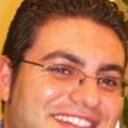Topical therapies for oral lichen planus management and their efficacy: a narrative review.
Ключові слова
Анотація
Oral Lichen Planus (OLP) is a chronic inflammatory condition implicating T cell-mediated cytotoxicity, and involving oral mucosal surfaces. Several therapeutic regimens have been evaluated to treat OLP and pain related, but often without high level of evidence. Topical formulations are the favourite for the majority of cases; bioadhesive formulations have been considered very useful and practical for local drug delivery in oral mucosa, due to the increased residence time on the oral mucosa of the dosage forms and better therapeutic efficacy. In this narrative review, authors try to illustrate the current topical managements for OLP from the accessible literature on this topic. Steroids are very helpful in discomfort and making better quality of life: they are considered the first-line treatment even if they could cause secondary candidosis, and sometimes bad taste, nausea, dry mouth, sore throat or swollen mouth. Other substances or devices by topical administration are adopted especially when the first line approach is refractory. This is the case when retinol with its synthetic and natural analogues (retinoids), hyaluronic acid, or Aloe Vera are chosen. Recent topical applications for OLP therapy include phototherapy and low/high energy pulsing light; the treatment with extracorporeal photochemotherapy is also reasonable and promising. Finally, calcineurin inhibitors (i.e. cyclosporine, tacrolimus and pimecrolimus), antioxidant and biologics (i.e alefacept, efalizumab, basiliximab, TNF-α inhibitors - infliximab, rituximab) may be alternative approaches when OLP does not respond to the standard protocols. In this scenario, there are several studies on molecules different from glucocorticosteroids, but not sufficient or statistically adequate to justify their evidence-based use in OLP; large randomized placebo controlled trials are required to evaluate the safety and effectiveness of these non conventional therapies. In conclusion, since OLP is a chronic disease and requires long-term management, the dental/medical practitioner, who treats OLP patients, needs to know the natural history of OLP, how to monitor, and how to treat, taking in account all of the available modalities conventional and not, with pros and cons.



